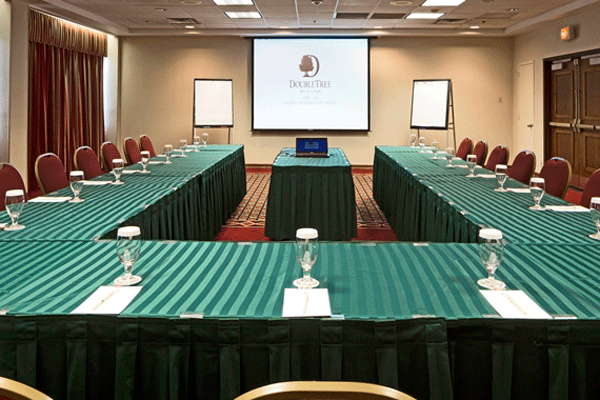
Last week, I started a two-part series to empower small hotels and lodges to better position their brand as they offer conference facilities which are their biggest revenue driver.
brand savvy with Stha Magida & Mufaro Zhou

These two articles are mainly based on personal experiences during my attendance to workshops in hotels as either a facilitator or participant. Most of the small hotels and lodges receiving good business of late are owned by individual or family entrepreneurs who understand that customers are the best entrepreneur’s teacher. A business that can best meet customers’ needs will eventually become invaluable and it will subsequently result in referrals. A good word out there is a noteworthy future investment for repeat business and new clientele.
As I continue to focus on conference facilities, I will commence by emphasising that the ambience of a meeting room is very important and normally gives a first impression. The number of participants should determine the size of room allocated with workspaces big enough to accommodate laptops (of late) for both facilitators and participants. I once attended a meeting where participants occupied only about 30% of the room and it felt overly large, also requiring more effort for our voices to be heard. Worse off, the doors to the male and female ablution facilities lead directly into the conference room and you all know how we all feel about such a setup, especially donning our Italian suits.
A good conference centre must continuously build up on the requests of its diverse clients. There is always something new to learn from requirements of every group that attends a meeting at your venue. Some clients will decline the need for some routinely used things like flip charts but proactiveness is necessary through placing them strategically in the conference room to cater for an unplanned need by the facilitator.
The waiting staff must always be responsive to the client’s needs, be it adjusting the air conditioner or attending to any other realistic request raised by the client. The client’s programme of their daily proceedings is a must-have for all event coordinators, preferably in advance for the sake of planning for tea and lunch breaks. Furthermore, an insight into the workshop programme triggers discussion on other potential requirements by the client such as working space for break-away sessions. Constant communication with the group’s focal person during sessions is key to ensure availability of teas and lunch on time. A seemingly inconsequential five minute delay during tea break can have a serious impact on the meeting’s timetable. In relation to this is the necessity for venues to adjust staff responsibilities and numbers in relation to conference group sizes to avoid bottlenecks and congestion on serving points during tea or lunch break. Simple innovations such as labelling buffet chafing dishes and sandwich trays can bring such a huge difference, especially on time management without much resources invested in the process. Labelling can also be extended to the conference room doors when hosting multiple groups at any given time to reduce the possibility of participants finding themselves awkwardly attending the wrong meeting.
People attending a training will spend limited time in their rooms and are likely to require social spaces to work from, be it during or after hours to focus on group work or overnight assignments. A conference venue has to be well-prepared for this requirement through providing a conducive outdoor working environment. A gazebo with electricity plugs installed would fit this requirement well in addition to some big leafy trees on green lawn serving as a good alternative. There obviously must not be an oversight in providing a strong and consistent WiFi signal, as well as lighting in that outdoor environment.
The business can further boost its brand through branded ballpoint pens and notebooks. The plain black and white attire for staff is surely not compulsory, neither is it the gold standard and can be value-added through embroidering logos on the white shirts and blouses. Employees within hospitality establishments, especially those who come into contact with conference attendees, including those behind the scenes, must be continuously reminded of their contribution to the overall performance of the company brand regardless of their job description and visibility. As the general hand cleans vehicles for guests, they must work efficiently and professionally just like the marketer who has brought clients to be hosted by the functions coordinator as all these employees harmoniously contribute to an ideal conference facility.
- Chamisa under fire over US$120K donation
- Mavhunga puts DeMbare into Chibuku quarterfinals
- Pension funds bet on Cabora Bassa oilfields
- Councils defy govt fire tender directive
Keep Reading
In conclusion, I implore conference centres to carry out daily evaluations to assess areas of improvement preferably factored into the next day or the next visiting group. Use your advantage as a small and autonomous hotel to be flexible and experiment with new service techniques to offer guests a continued renewed experience upon every visit.
Till next week, keep reading and remain brand savvy.
Stha Magida is contactable on [email protected]. Her co-writer is contactable on [email protected]











